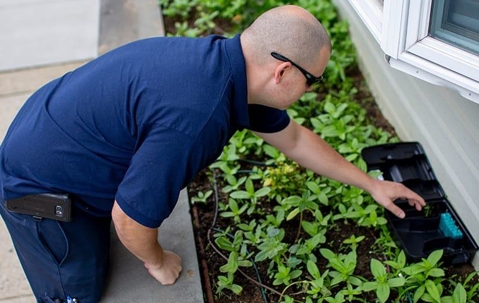Mice and rats are terrible houseguests. When they get in, they leave their excrement and urine everywhere they go. They also chew holes through baseboards, sheetrock, and the timbers inside walls. As they move about your home, they chew on other things as well. They will tear up insulation to gather materials for their nests. They will chew holes in stored boxes, furniture, and other items you have tucked away. Worst of all, they chew holes in your food packages. This can contaminate the items inside and lead to illness for you and everyone living inside your Westchester home. If all this isn't bad enough, mice and rats bring parasites into your home: tiny fleas and mites, dangerous ticks, disgusting lice, and more. Mice and rats can cause a lot of problems. It is safe to say that your home is better without rodents in it. That is why we've put together this helpful rodent-exclusion guide. Here is everything you need to know about keeping rodents out.
Are all mice and rats equal threats?
In our area, there are basically four rodents to be concerned about.
- Mice — In our area, we have the common house mouse and the deer mouse to contend with. Of the two, the house mouse is the worst because the deer mouse doesn't prefer to be in your main house. It will infest barns, sheds, and outbuildings before it will infest a home. The common house mouse, on the other hand, is happy to live in our homes with us.
- Rats — The two rats we have to deal with are Norway rats and roof rats. Both can be a significant problem but, of the two, Norway rats are less of a problem, but only slightly. Norway rats prefer to be outside because they create burrows in the ground. Roof rats usually create nest above the ground and a man-made structure is the best place on earth for a roof rat to live.
What Attracts Mice and Rats?
When rodents come into your yard, they may just do it for no other reason than because it is there. There are, however, several factors that will draw them in and make your yard feel safe.
Any food source will draw mice and rats in, but there are two sources that are most common: exterior trash and birdseed. Keep your exterior trash in a covered container and consider putting bird feeders at least 20 feet away from your home.
Water Sources. Rodents Need a Drink as Much as They Need a Meal.
Hiding places. Rodents are timid animals. A yard that offers places to hide will be more attractive. They may hide in objects stored in the backyard, woodpiles, toys or any number of places in your landscaping. Keep things trimmed neat and remove unnecessary clutter to keep rodents away.
How Do Mice and Rats Get In?
There are many ways rodents can get into your home. What makes rodents somewhat unique among pests is that they can create entry points where no entry points exist. Here are a few examples:
- Do you have working door sweeps or weather stripping, after a rodent chews on them you may not.
- Do you have sound door and window frames, rodents can fix that.
- Do you have sole plates on your home that have been softened by moisture? Rodents can tunnel right into your home through the softened wood.
What is the Best Way to Keep Rodents Out
Removing attractants, sealing entry points, and applying metal flashing or wire mesh to sensitive areas can help to keep your home rodent-free. If you detect rodent activity around your home, you may also lay traps down to catch and eliminate them before they get in. This can be a lot of work and rodents may still find a way past your defenses. The best way to keep rodents out is with a little help from the rodent experts here at Parkway Pest Services.
Reach out to us at any time if you have questions or you'd like to request service. We're here to help.

